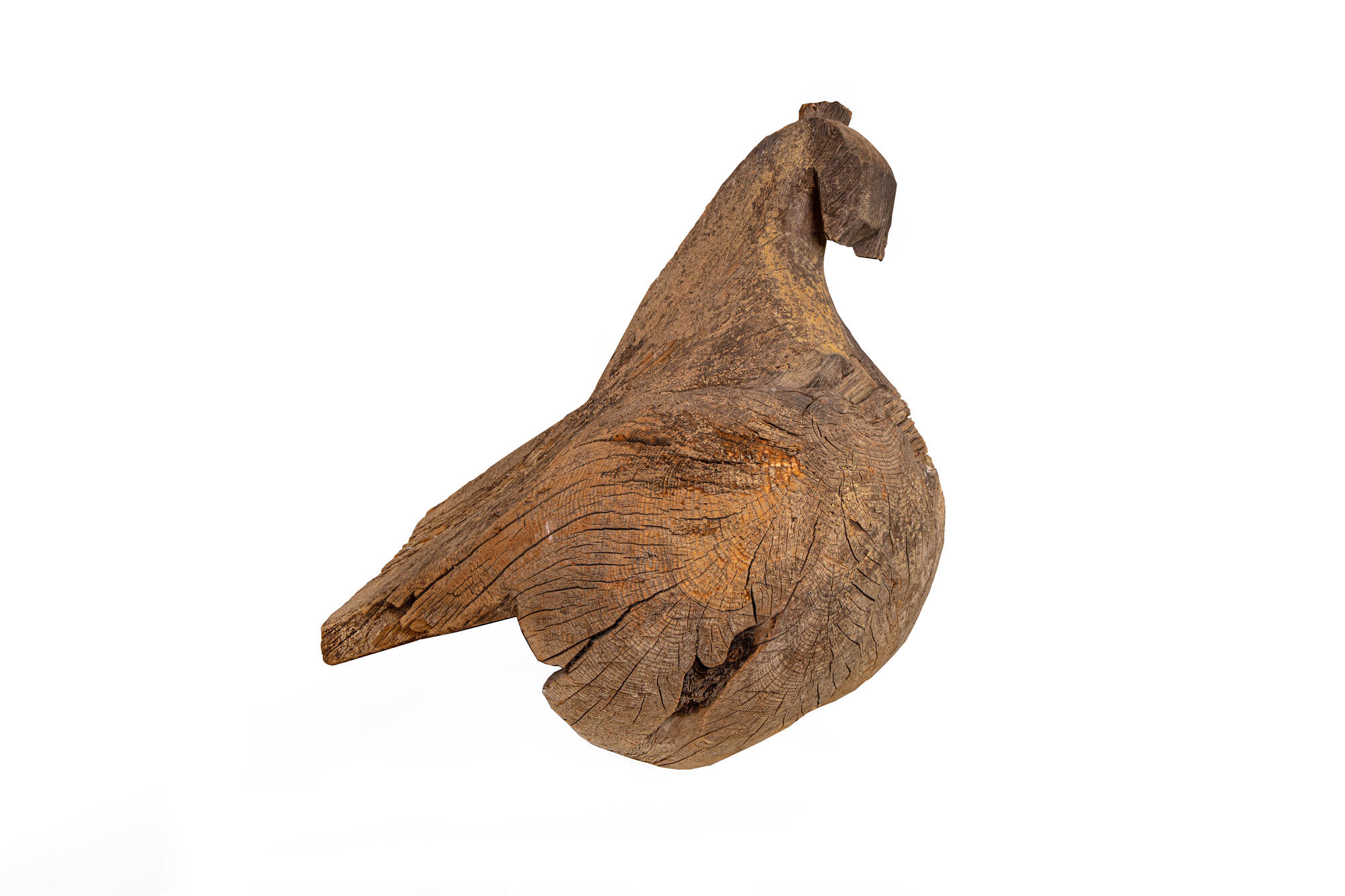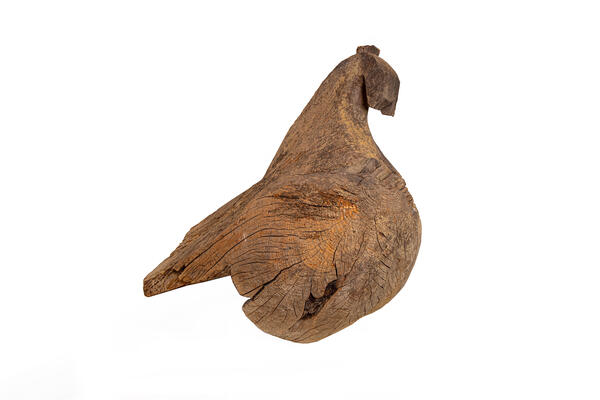Okhlupen or “shelom” (ridgepole) is the upper ridge of the roof of a peasant hut. This is a thick heavy log with a gutter hollowed out from below. Okhlupen covered the joint of the ramps and pressed down the ends of the roofing boards with its weight.
To make such an element, the trunk of a tree — larch or spruce — was cut down in the forest together with the rootstock. It increased the weight of the log and at the same time was used for decorative purposes: under the skillful hand of a village craftsman, this part of the tree turned into an original sculpture of a horse, bird or deer. In ancient times, this sculptural image was endowed with a protective function, which is reflected in the meaning of the word “shelom”. It was associated with protection and meant the helmet of an ancient Russian warrior.
Buildings in the villages of the Russian North were striking in their grandiosity, the severity of their forms and the restraint of the decor. Houses, as a rule, were arranged in one row — “order”. They faced the main street with their main facades, and behind them a space was formed where the whole working and everyday life of the village took place. The decoration of the back of the house was also given great importance.
The okhlupen from the collection of the Sergiev Posad Museum-Reserve decorated the rear facade of a big northern house. It was brought from the museum expedition to the village of Navolotskaya on the Lower Toima River of the Verkhnetoyemsky district of the Arkhangelsk region in 1959. The okhlupen hung over a massive log deck made of logs, along which a horse with a cart was driven to the barn — a room where cattle were kept, hay and all agricultural equipment were stored.
Skillfully wielding an axe, a peasant craftsman created a sculpture from a random natural form. In its outlines, one can discern the appearance of a majestic duck bird, with a small head on a curved neck and a rounded protruding breast. Unpainted wood, which stood in the rain and wind, dried by the sun and hardened by frost, darkened in places and is covered with a natural golden coating. The heterogeneous surface with numerous cracks emphasizes the natural shape and material. Towering over the house, such a sculpture completed the composition of its facade and was organically coordinated with the majestic beauty of the northern landscape.
To make such an element, the trunk of a tree — larch or spruce — was cut down in the forest together with the rootstock. It increased the weight of the log and at the same time was used for decorative purposes: under the skillful hand of a village craftsman, this part of the tree turned into an original sculpture of a horse, bird or deer. In ancient times, this sculptural image was endowed with a protective function, which is reflected in the meaning of the word “shelom”. It was associated with protection and meant the helmet of an ancient Russian warrior.
Buildings in the villages of the Russian North were striking in their grandiosity, the severity of their forms and the restraint of the decor. Houses, as a rule, were arranged in one row — “order”. They faced the main street with their main facades, and behind them a space was formed where the whole working and everyday life of the village took place. The decoration of the back of the house was also given great importance.
The okhlupen from the collection of the Sergiev Posad Museum-Reserve decorated the rear facade of a big northern house. It was brought from the museum expedition to the village of Navolotskaya on the Lower Toima River of the Verkhnetoyemsky district of the Arkhangelsk region in 1959. The okhlupen hung over a massive log deck made of logs, along which a horse with a cart was driven to the barn — a room where cattle were kept, hay and all agricultural equipment were stored.
Skillfully wielding an axe, a peasant craftsman created a sculpture from a random natural form. In its outlines, one can discern the appearance of a majestic duck bird, with a small head on a curved neck and a rounded protruding breast. Unpainted wood, which stood in the rain and wind, dried by the sun and hardened by frost, darkened in places and is covered with a natural golden coating. The heterogeneous surface with numerous cracks emphasizes the natural shape and material. Towering over the house, such a sculpture completed the composition of its facade and was organically coordinated with the majestic beauty of the northern landscape.



